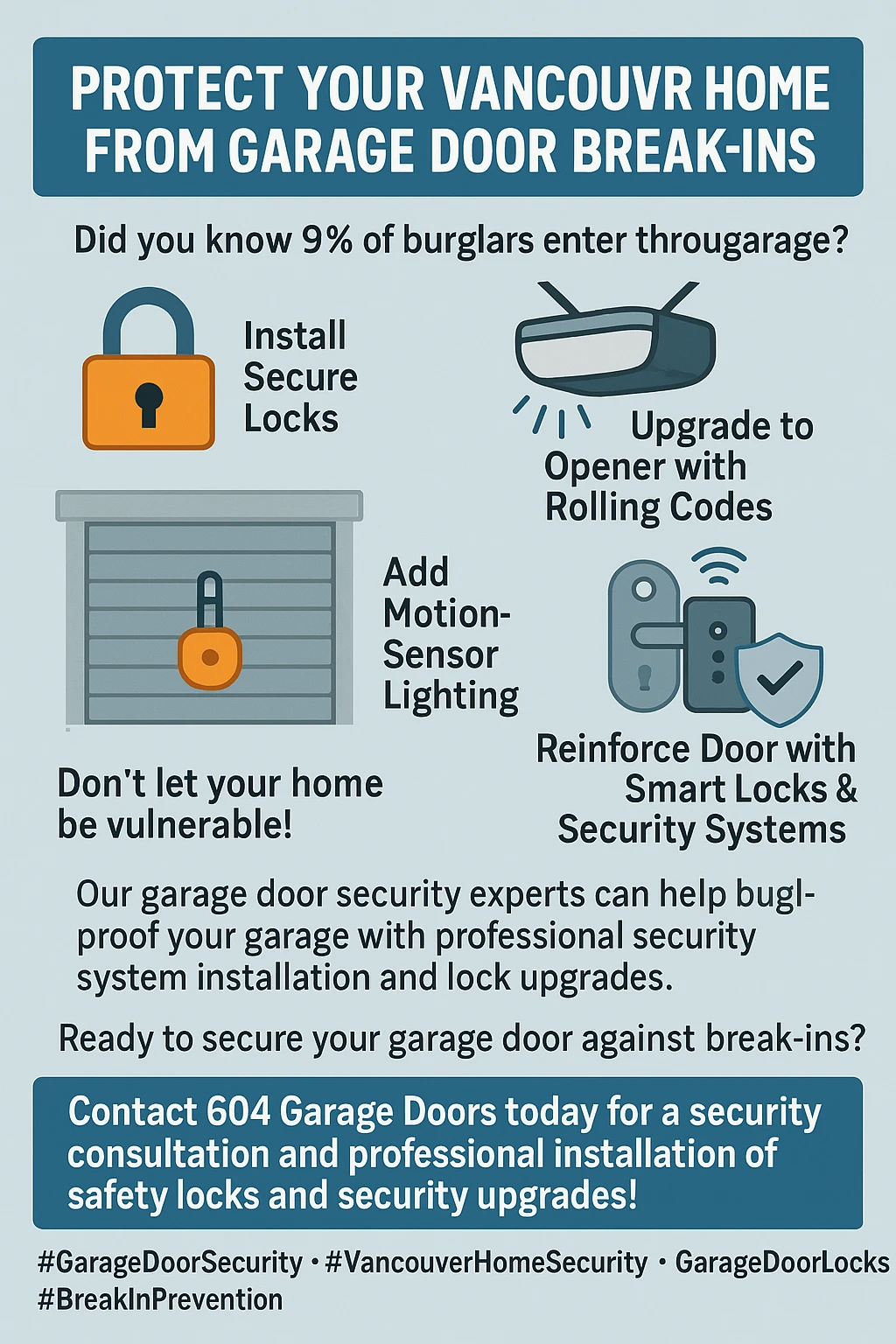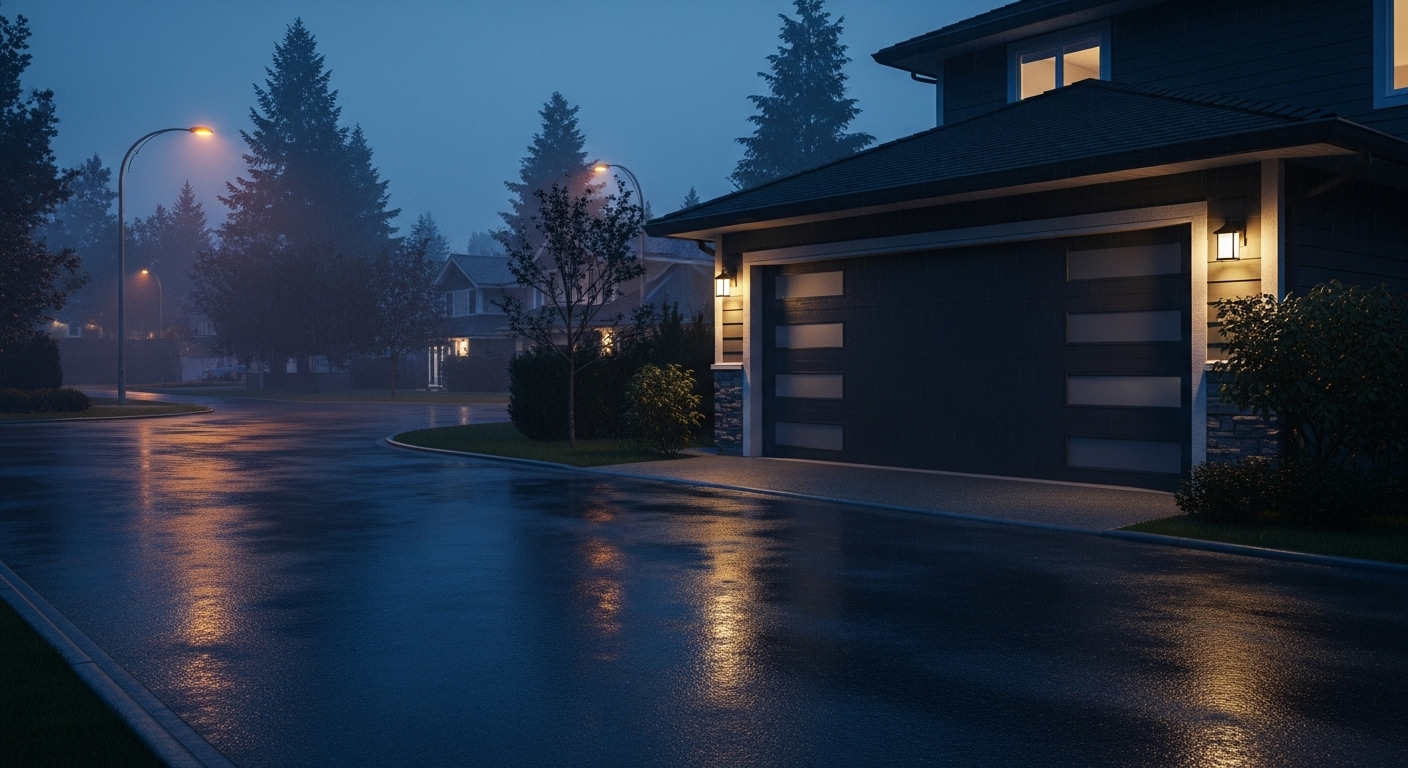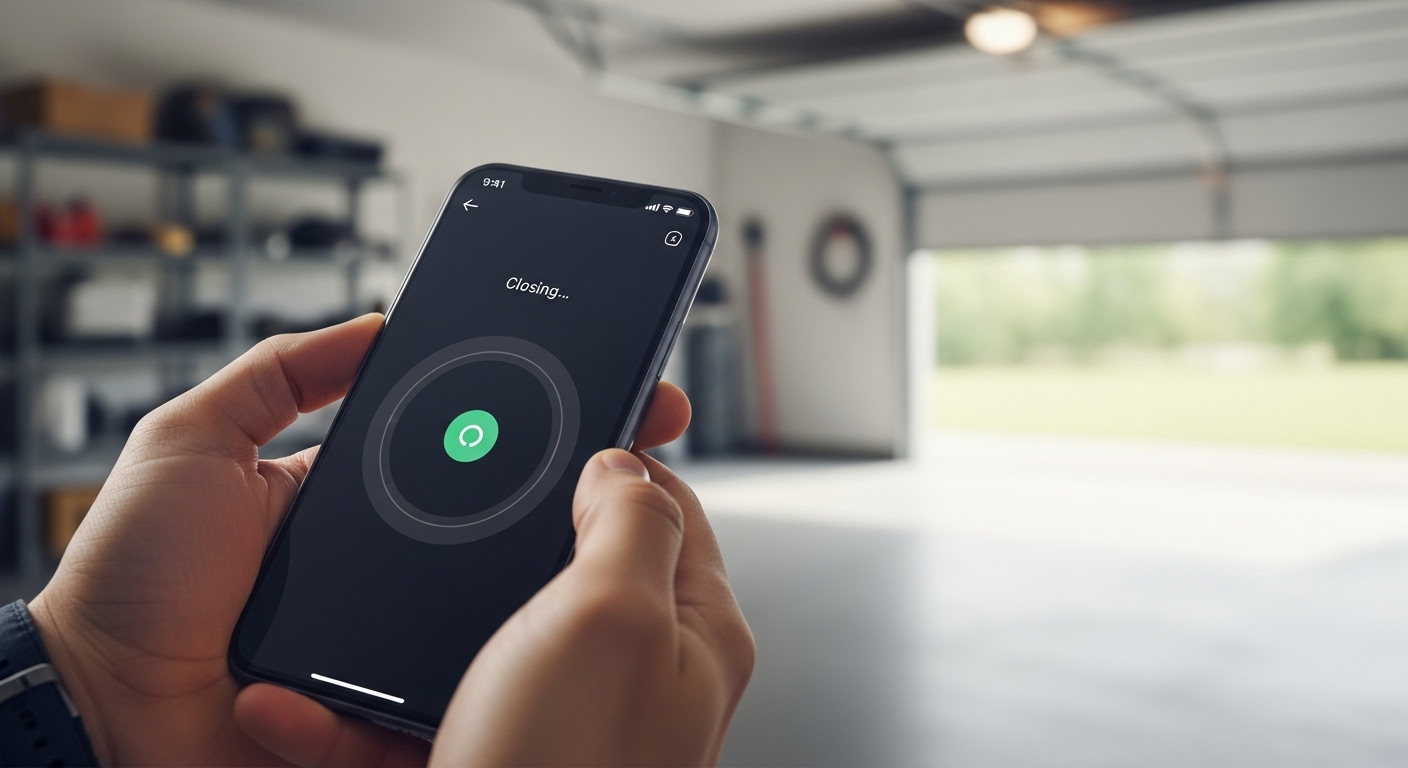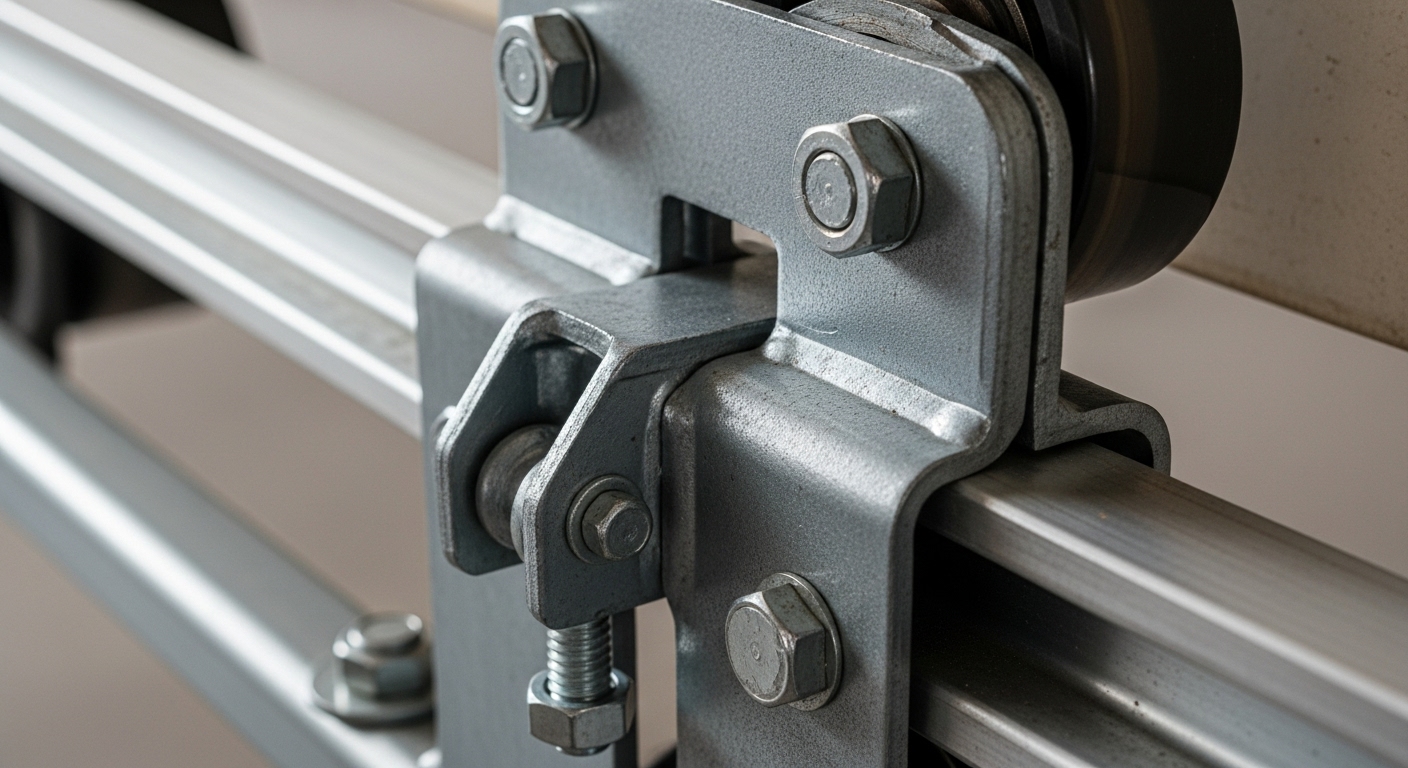How to Properly Secure Your Garage Door Against Vancouver Break-Ins and Theft
Worried about garage break-ins in Vancouver and wondering how to protect your home’s largest entry point? We’ll walk you through proven security strategies that keep criminals out while maintaining convenient access for your family – from cutting-edge smart technology to simple physical upgrades that make all the difference.
Picture this: you’re coming home after a long day, hitting that familiar garage door opener button as you pull into your driveway. But what if I told you that innocent-looking garage door could be your home’s biggest security weakness? As someone who’s been obsessed with home security since moving to Vancouver (blame it on watching too many true crime documentaries), I’ve learned that our garages are basically giant welcome mats for burglars if we’re not careful. The stats are honestly pretty scary – about 9% of all home break-ins happen right through the garage door, making it way more vulnerable than most of us realize.
Living in Metro Vancouver means dealing with unique security challenges that our friends in drier climates don’t face. Our wet weather can mess with garage door hardware, creating unexpected vulnerabilities, while recent news reports about Surrey seeing more break-ins using stolen garage door openers have everyone in the Lower Mainland on edge. The thing is, most of us treat our garages like extensions of our homes (because let’s be real, they basically are), but we don’t secure them nearly as well as our front doors.
Here’s what really opened my eyes: modern criminals have gotten seriously creative with garage break-ins. They’re not just trying to muscle doors open anymore – they’re using everything from coat hangers to exploit emergency release cords, to high-tech gadgets that can clone older garage door opener signals. It’s like a weird arms race between homeowners and thieves, except most homeowners don’t even know they’re in the fight.
Key Outtakes:
- Nine percent of burglars enter homes through garage doors, making them a critical security vulnerability that needs immediate attention
- Rolling code technology in modern garage door openers prevents criminals from intercepting and duplicating your opener signals
- The emergency release cord represents one of the most exploited vulnerabilities, but can be secured without compromising safety
- Smart garage door systems offer remote monitoring, automatic closing features, and real-time alerts for suspicious activity
- Layered security combining physical barriers, proper lighting, and electronic monitoring creates the most effective defense

Understanding Vancouver’s Unique Garage Security Challenges
Living in Vancouver means dealing with security concerns that are totally different from what homeowners face in other parts of Canada. The combination of our dense urban environment, valuable real estate, and unfortunately, some pretty determined criminals, creates a perfect storm for garage-related break-ins. What really drives this point home is the recent surge in break-ins across Surrey and other Lower Mainland communities, where thieves are specifically targeting garage door openers stolen from unlocked cars.

Our Pacific Northwest climate adds another layer of complexity that most security guides completely ignore. Vancouver’s constant moisture and temperature fluctuations can wreak havoc on garage door hardware over time. I learned this the hard way when my garage door lock started sticking last winter – turns out the mechanism had corroded from humidity exposure, making it practically useless for security purposes. This kind of weather-related deterioration can turn even high-quality security hardware into a liability if you’re not staying on top of maintenance.
The urban density in places like Burnaby, Richmond, and North Vancouver also creates unique opportunities for criminals. Garages are often tucked away from street view, giving thieves plenty of cover to work on breaking in. Plus, our culture of leaving cars in driveways or underground parkades means garage door remotes are sitting ducks for opportunistic criminals looking for easy targets.
What’s particularly concerning about Vancouver’s break-in trends is how organized some of these operations have become. We’re not just dealing with random opportunists anymore – there are crews specifically targeting neighborhoods, looking for patterns in when people leave for work, which houses have valuable cars or equipment visible in garages, and which security measures are just for show versus actually functional.
Upgrading Your Garage Door Opener Technology
The foundation of any serious garage door security strategy starts with your opener technology, and honestly, if you’re still running an opener from the ’90s, you might as well leave your garage door propped open with a welcome sign. Older garage door systems use what’s called fixed code technology, which is basically like using the same password for everything online – once someone figures it out, you’re toast.
Rolling code technology changed the game completely by generating a new access code every single time you use your garage door remote. Think of it like having a password that automatically changes itself thousands of times per day. Even if some tech-savvy criminal manages to intercept your signal (which requires some serious equipment), that code becomes completely useless the moment you use your opener again. Modern systems cycle through billions of possible combinations, making it virtually impossible for criminals to crack your access code.
Smart garage door openers take security to a whole different level by putting control literally in your pocket. I upgraded to a smart system last year, and the peace of mind is incredible. Being able to check if I actually closed my garage door while I’m already halfway to work has saved my sanity more times than I can count. But beyond convenience, these systems offer real security benefits like automatic closing timers, real-time notifications when your door opens or closes, and the ability to grant temporary access to delivery drivers or contractors without handing over physical remotes. 
The installation process for smart openers has gotten surprisingly straightforward, though I’d still recommend professional installation for the security features to work properly. Many of these systems integrate with existing Wi-Fi networks and can connect to broader smart home security systems. Some models even include built-in cameras and two-way communication, essentially turning your garage door opener into a security hub.
One feature that’s become absolutely essential in Vancouver’s break-in climate is geofencing capability. This technology automatically closes your garage door when your phone leaves a certain radius around your house and can send alerts if the door opens when you’re not home. It’s like having a security guard who never takes a coffee break.
Physical Security Reinforcements That Actually Work
While technology is fantastic, criminals who are serious about breaking into your garage aren’t going to be stopped by electronics alone. Physical security measures create multiple barriers that force thieves to make noise, take time, and potentially give up before gaining access. The key is layering different types of physical deterrents so that defeating one doesn’t automatically give them access.
The emergency release cord represents one of the biggest vulnerabilities in most garage doors, and it’s something most homeowners never even think about. Criminals can manipulate this cord from outside the garage using coat hangers or similar tools, effectively bypassing all your electronic security measures. The solution isn’t to remove the cord entirely (that would eliminate your emergency escape route), but rather to secure it properly using zip ties or specialized locks that maintain functionality while preventing external manipulation.
Track locks might be the most underrated security upgrade you can make to your garage door. These devices slide through your door tracks and physically prevent the door from being lifted, even if someone manages to defeat your opener or emergency release. I installed track locks on both sides of my door, and they’ve given me huge peace of mind, especially when traveling. The key is choosing locks that are easy for you to operate from inside but impossible to manipulate from outside. 
Door reinforcement goes beyond just the garage door itself – you need to think about the entire opening as a potential entry point. Upgrading to a solid core door for any entrance between your garage and house creates a critical secondary barrier. Adding deadbolts, reinforcing door frames with steel plates, and ensuring hinges are properly secured with long screws that anchor into wall studs all contribute to a comprehensive physical security strategy.
Window security often gets overlooked, but garage door windows can provide criminals with valuable intelligence about what you have stored inside and when you’re home or away. Frosting windows or adding security film prevents visual surveillance while still allowing natural light. If you’re really concerned about window security, consider upgrading to impact-resistant glass or adding security bars that don’t interfere with the door’s operation.
Lighting and Surveillance Integration
Proper lighting strategy can single-handedly deter most garage break-in attempts because criminals hate working in the spotlight. Motion-activated LED lights positioned to eliminate hiding spots around your garage entrance force anyone approaching to be visible from the street and neighboring houses. The key is strategic placement – you want light coverage that activates before someone reaches your garage door, giving you advance warning of any suspicious activity.
I’ve learned that lighting placement is way more nuanced than just slapping a motion sensor above your garage door. You need to think about approach angles, potential hiding spots behind cars or landscaping, and sight


